The deepest parts of the ocean are home to some of the most mysterious and fascinating creatures on Earth. These rare marine species have adapted to survive in the pitch-black, high-pressure environment of ocean trenches. Their unique features help them thrive where few others can exist. Here’s a look at some of the rarest marine creatures that call the depths of the ocean home.
Dumbo Octopus
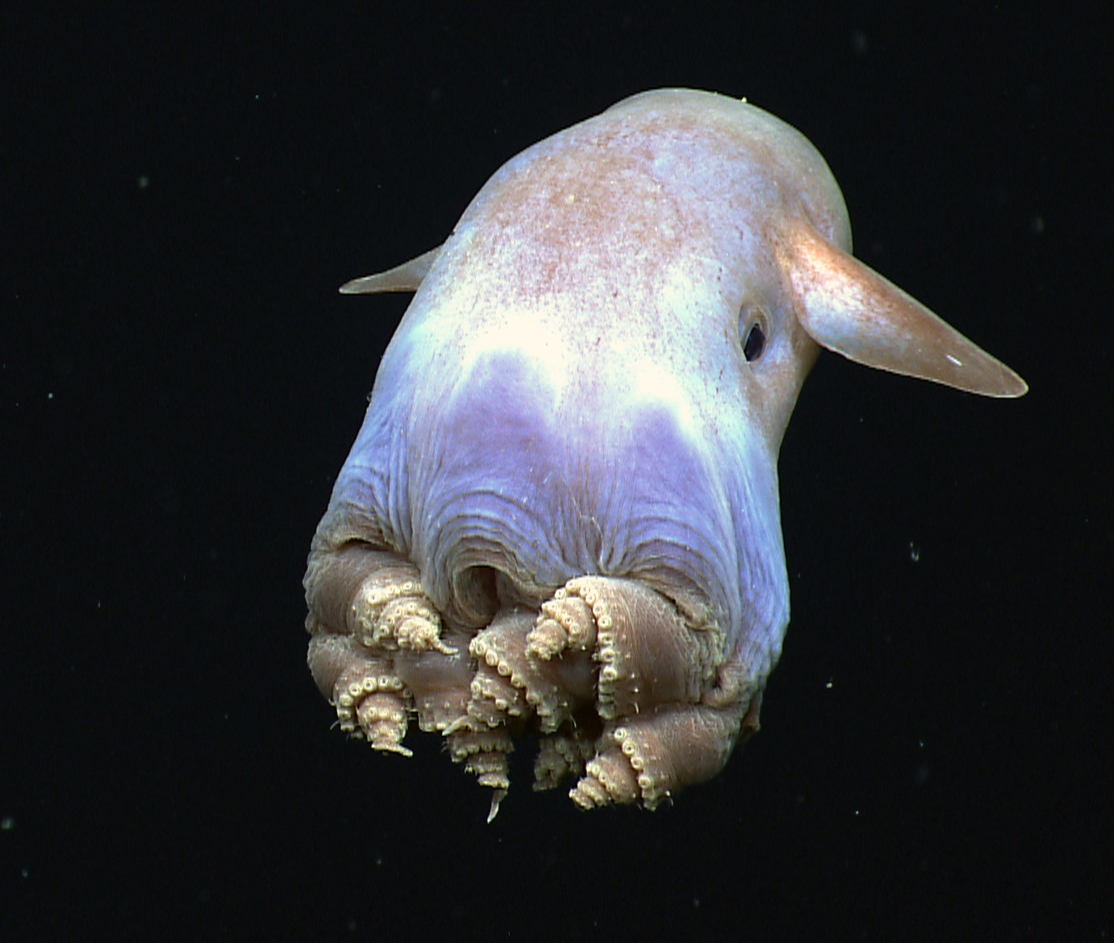
The Dumbo octopus gets its name from its ear-like fins that resemble the cartoon elephant. It lives at depths of 9,800 to 13,000 feet, making it one of the deepest-living octopus species. This octopus glides gracefully through the water using its fins, moving in a way that looks almost like flying. Its body is soft, with colors ranging from pale pink to bright orange. Dumbo octopuses can grow up to 12 inches long, though some are smaller. They feed mainly on small invertebrates found on the seafloor.
Deep-sea Dragonfish
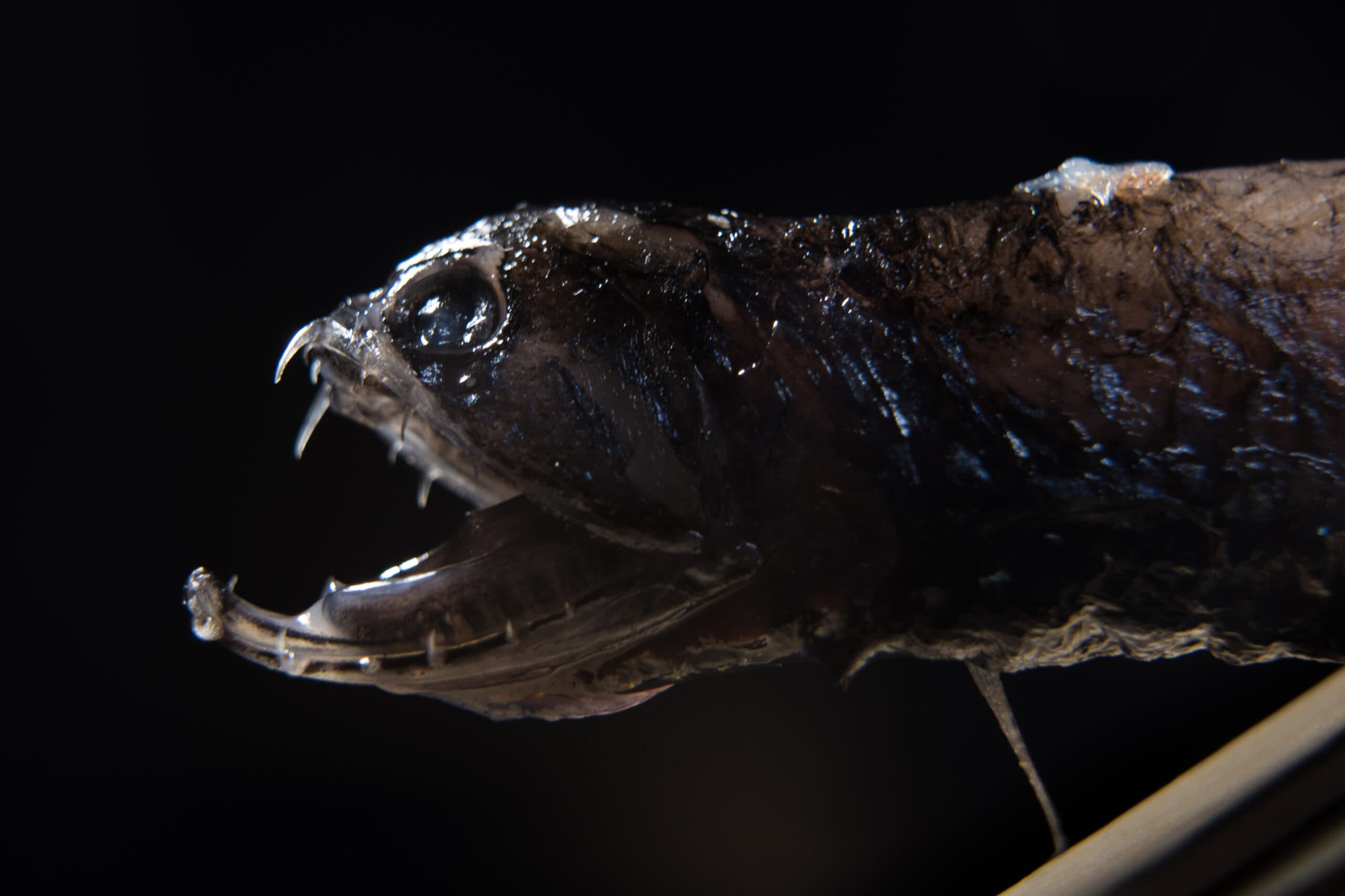
The deep-sea dragonfish is a fierce predator with sharp, needle-like teeth and a bioluminescent barbel that dangles from its chin. It uses this light to lure prey in the dark waters, often at depths of up to 7,000 feet. These fish are typically about 6 inches long but have a frightening appearance due to their large jaws and glowing spots along their body. They can open their mouths wide enough to swallow prey much larger than themselves. The dragonfish thrives in complete darkness, hunting small fish and shrimp.
Vampire Squid
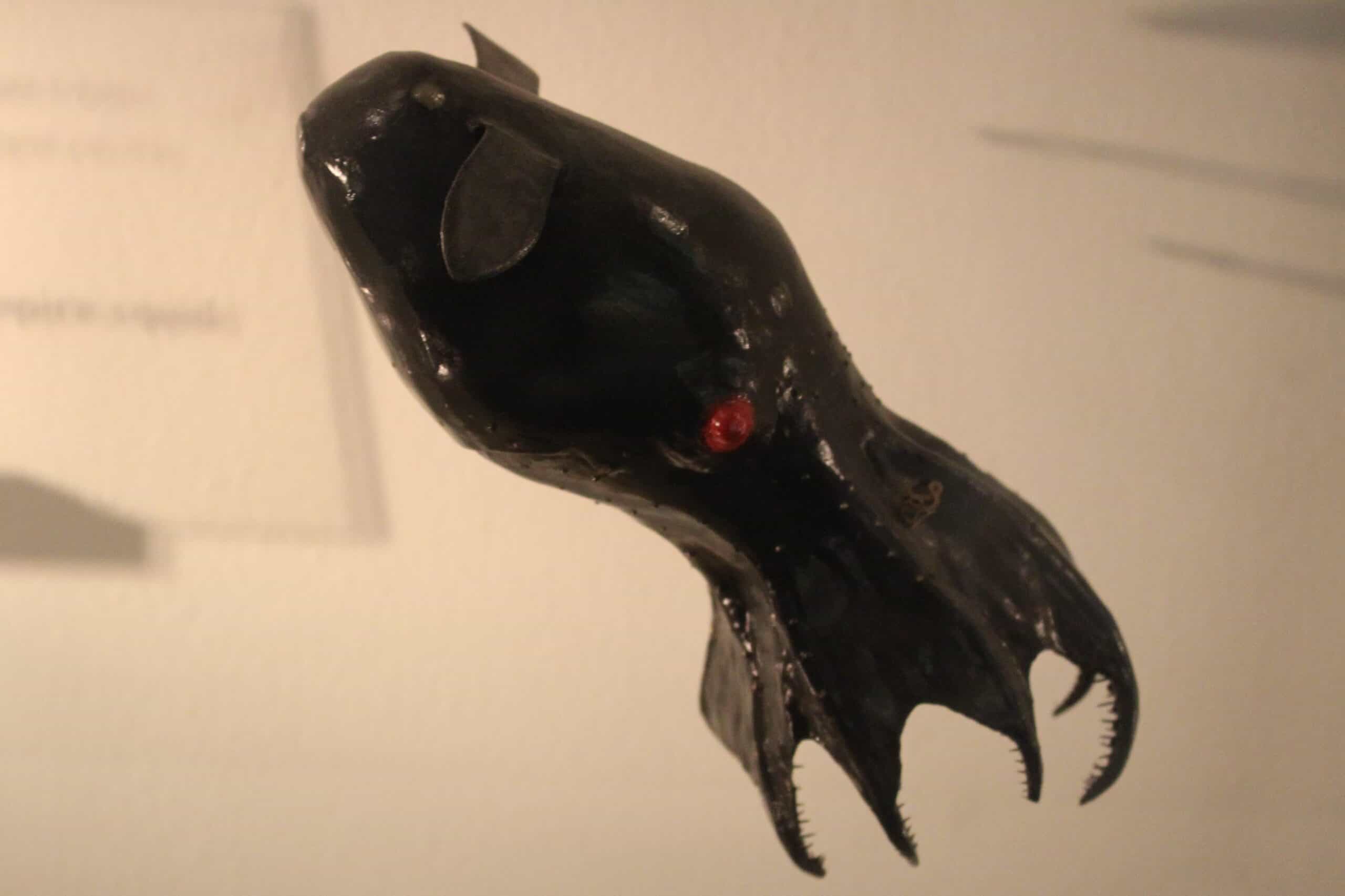
Despite its name, the vampire squid is not a bloodsucker. Instead, it feeds on detritus, collecting dead organic material that drifts down from above. Found at depths of 2,000 to 3,000 feet, it lives in oxygen minimum zones where few predators can survive. Its reddish-brown body and large, bright eyes give it a menacing look, but it’s a relatively gentle creature. The vampire squid’s webbed arms are lined with soft spines, and it can turn itself inside out to protect against threats. This squid glows in the dark to confuse predators or attract mates.
Giant Squid
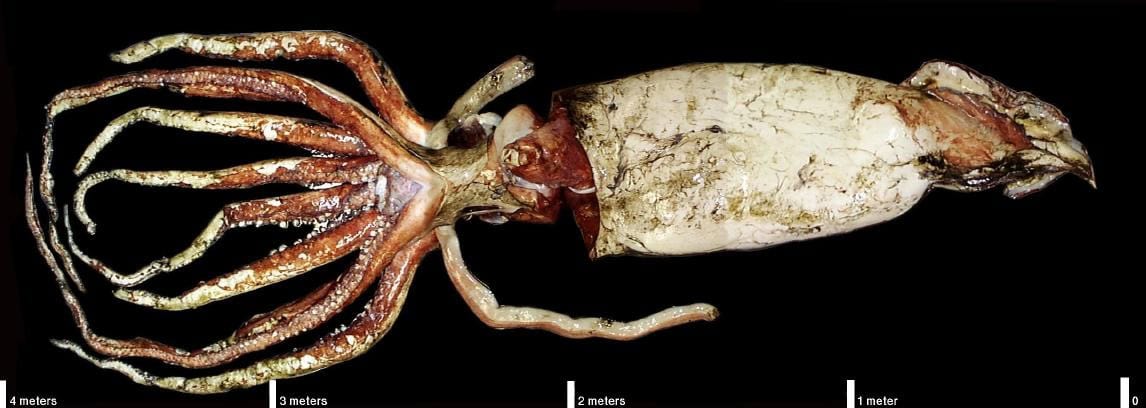
The giant squid is one of the most legendary deep-sea creatures, growing up to 43 feet long. It lives at depths of 1,000 to 2,000 feet and is known for its enormous eyes, which help it see in the near-total darkness. Its long tentacles are lined with powerful suckers, used to catch fish and other prey. The giant squid is elusive and rarely seen by humans, adding to its mystique. This massive invertebrate can move quickly through the water using jet propulsion, making it a formidable predator in the deep.
Frilled Shark
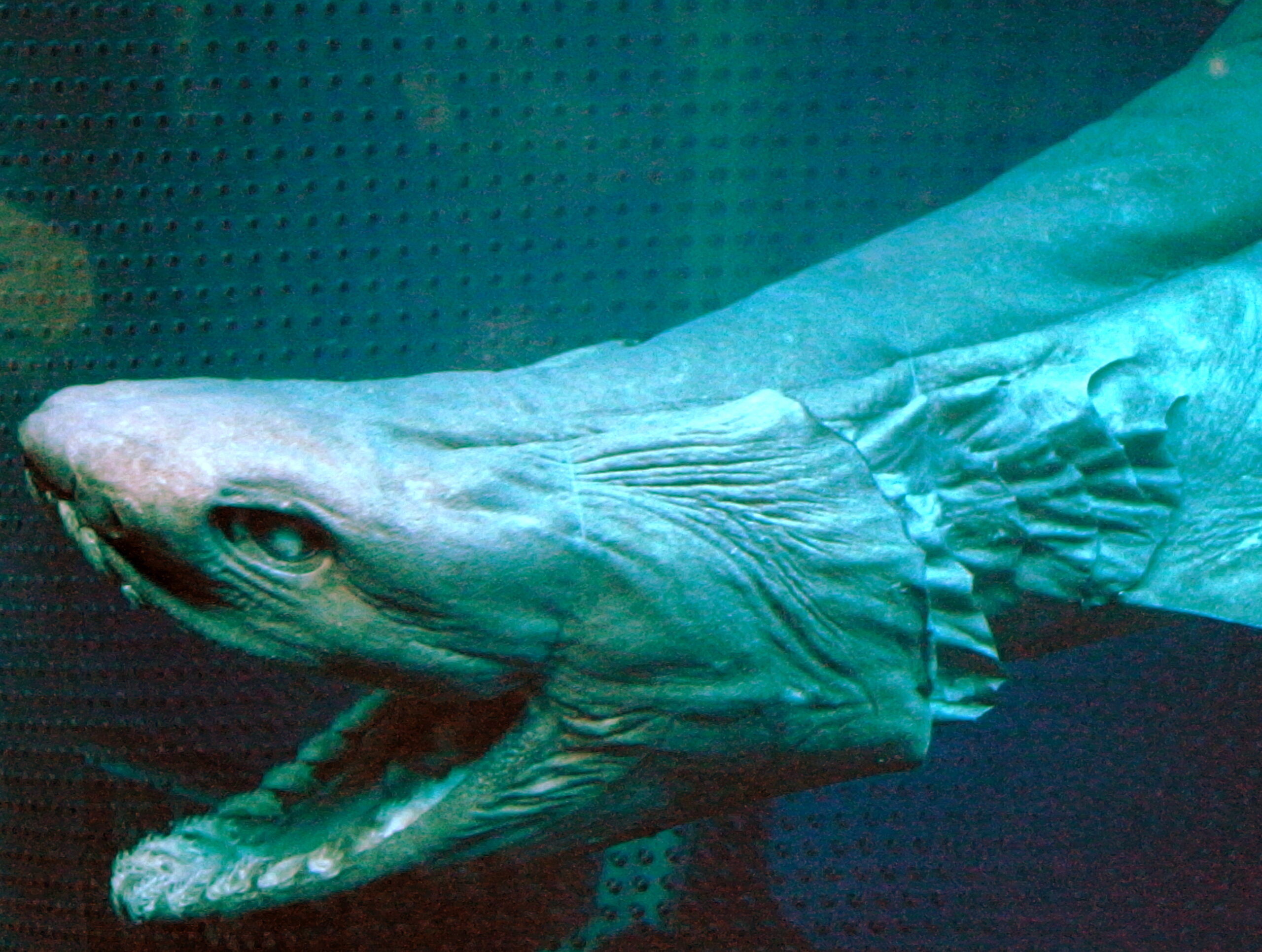
The frilled shark is often called a “living fossil” due to its prehistoric appearance and ancient lineage. It has a long, eel-like body and a mouth filled with hundreds of sharp, needle-like teeth. This shark lives at depths of 1,600 feet or more, lurking in the darkness to ambush prey like squid and fish. The frilled shark can grow up to 6.6 feet in length, though it’s rarely seen by humans. Its slow, serpentine swimming style gives it a haunting, mysterious presence in the deep sea.
Goblin Shark
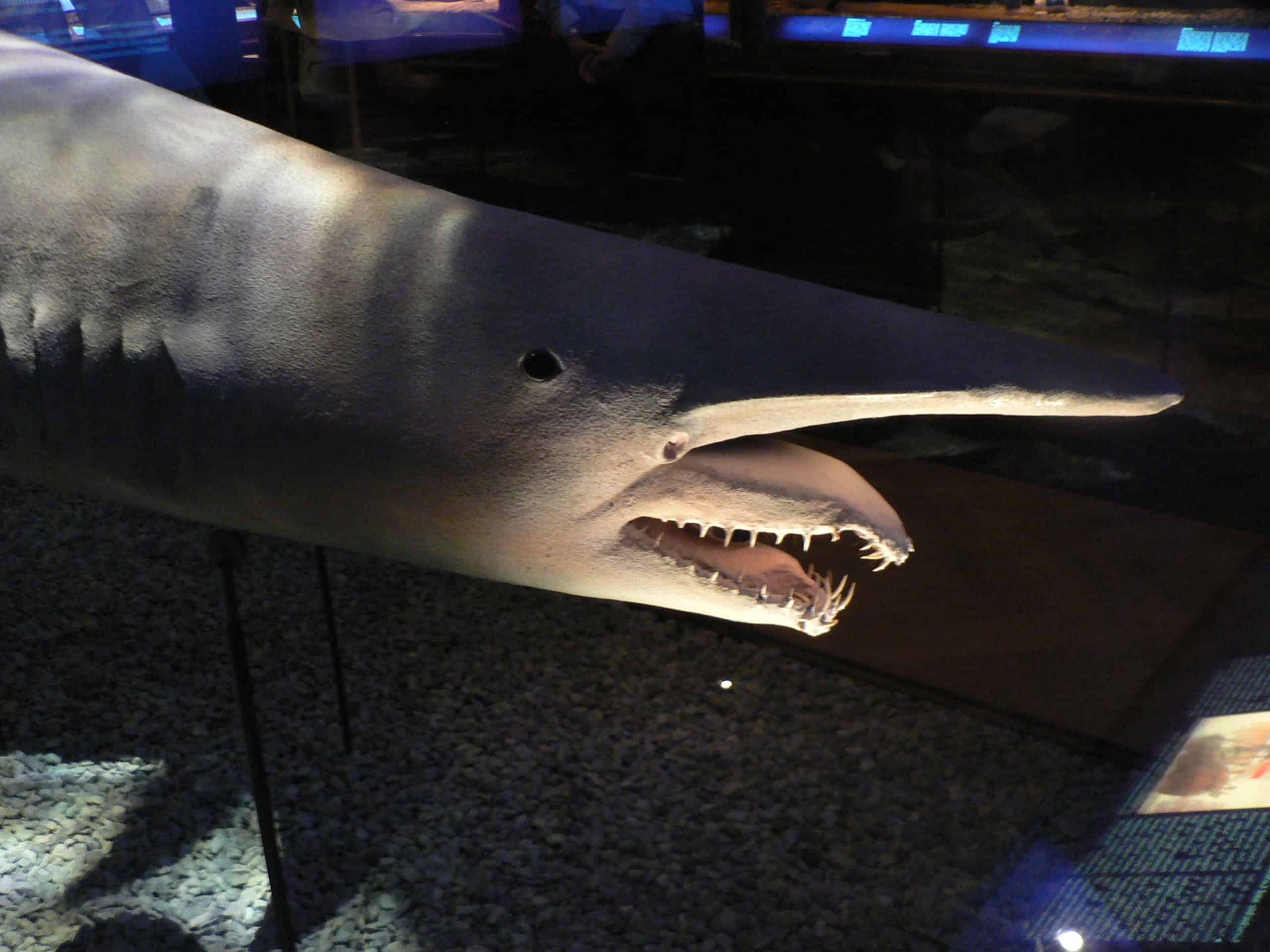
The goblin shark is one of the strangest-looking sharks, with a long, flattened snout and protruding jaws. This rare species is found at depths of around 3,000 feet, where it uses its elongated snout to detect the electric fields of prey. When it senses a meal, its jaws shoot forward at lightning speed to snatch up fish or squid. Goblin sharks can grow up to 12 feet long and have a pinkish hue due to the transparency of their skin. They are slow-moving but highly effective hunters in the deep sea.
Gulper Eel
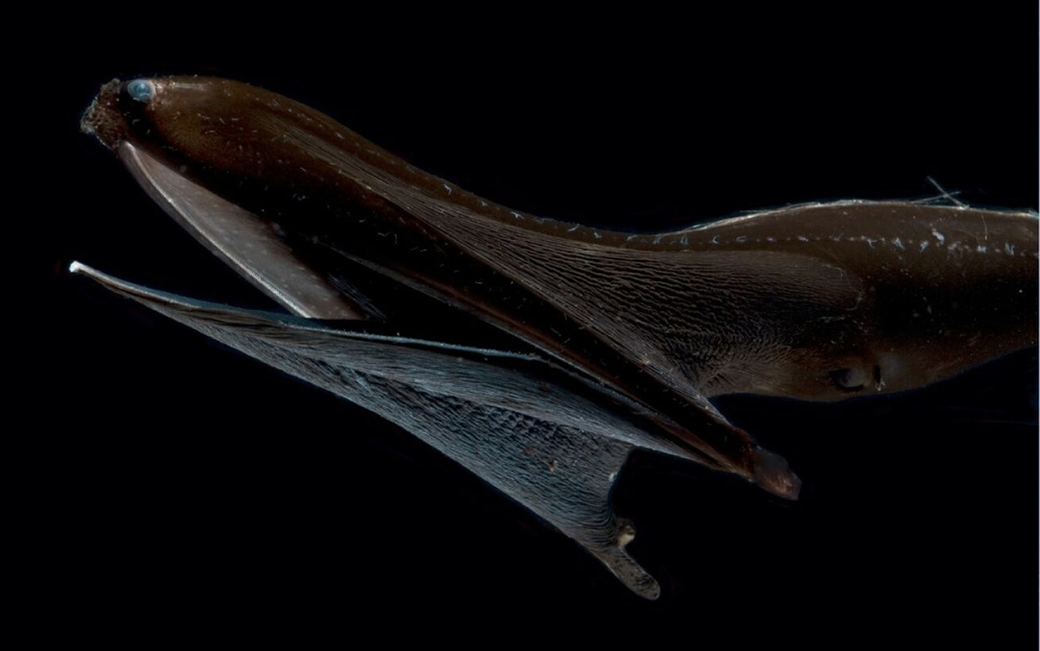
The gulper eel is known for its massive, gaping mouth, which can open wide enough to swallow prey much larger than itself. It lives at depths of 3,000 to 6,000 feet, where food is scarce, so this unique feature helps it catch anything that comes its way. Gulper eels can grow up to 6 feet long, but their body is very thin, making their enormous jaws stand out even more. Their bioluminescent tail helps lure prey in the pitch-black environment. Despite their fearsome appearance, they mainly feed on shrimp and small fish.
Anglerfish
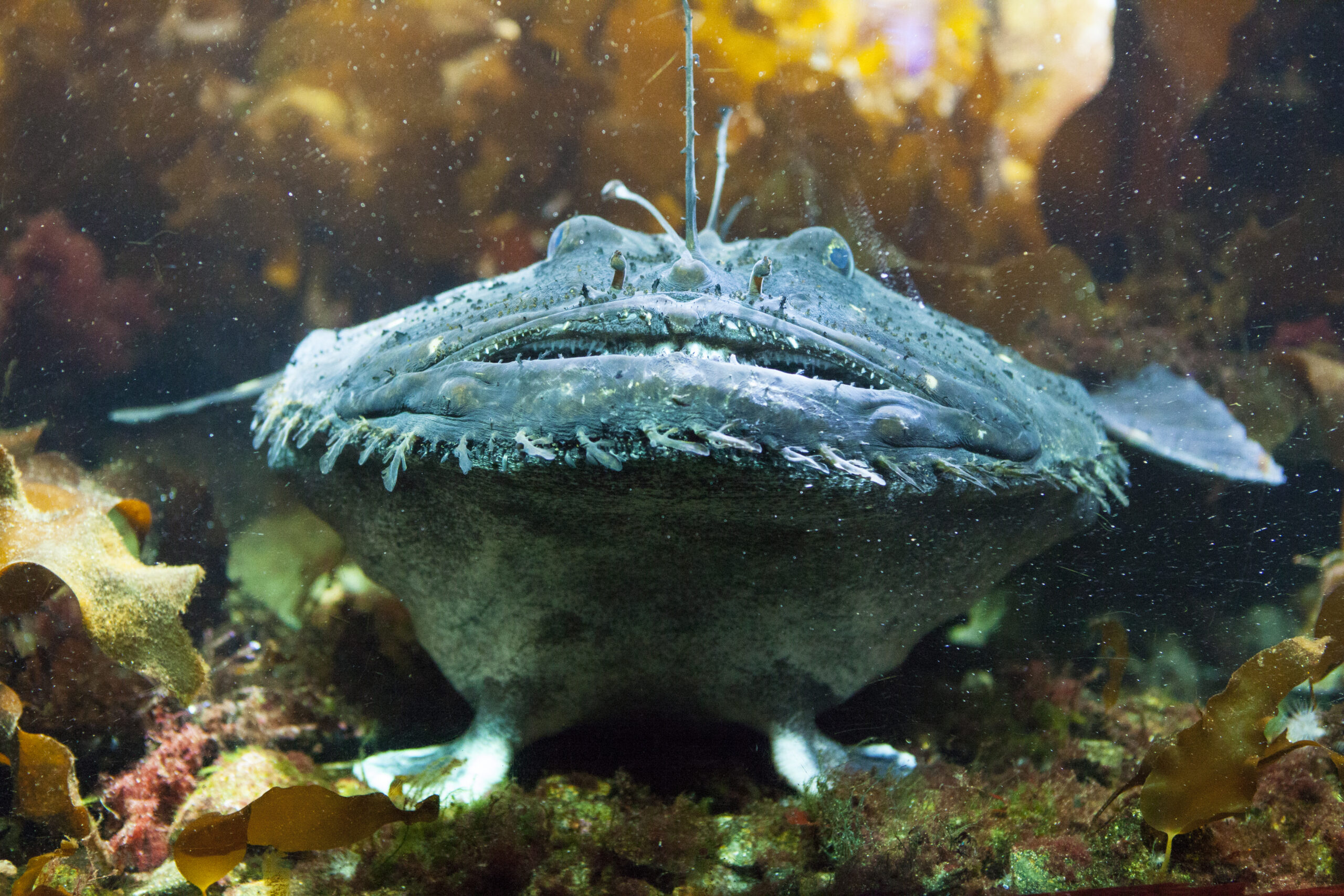
The anglerfish is one of the most iconic deep-sea species, known for the glowing lure that dangles from its head. It uses this bioluminescent lure to attract prey in the dark depths of the ocean, typically at 3,000 feet or more. Anglerfish are relatively small, with females growing up to 8 inches long, but their sharp teeth and expandable stomachs allow them to devour prey twice their size. The males are much smaller and latch onto the females to reproduce, living off their partner for life. This strange relationship is just one of the anglerfish’s many unique traits.
Giant Isopod
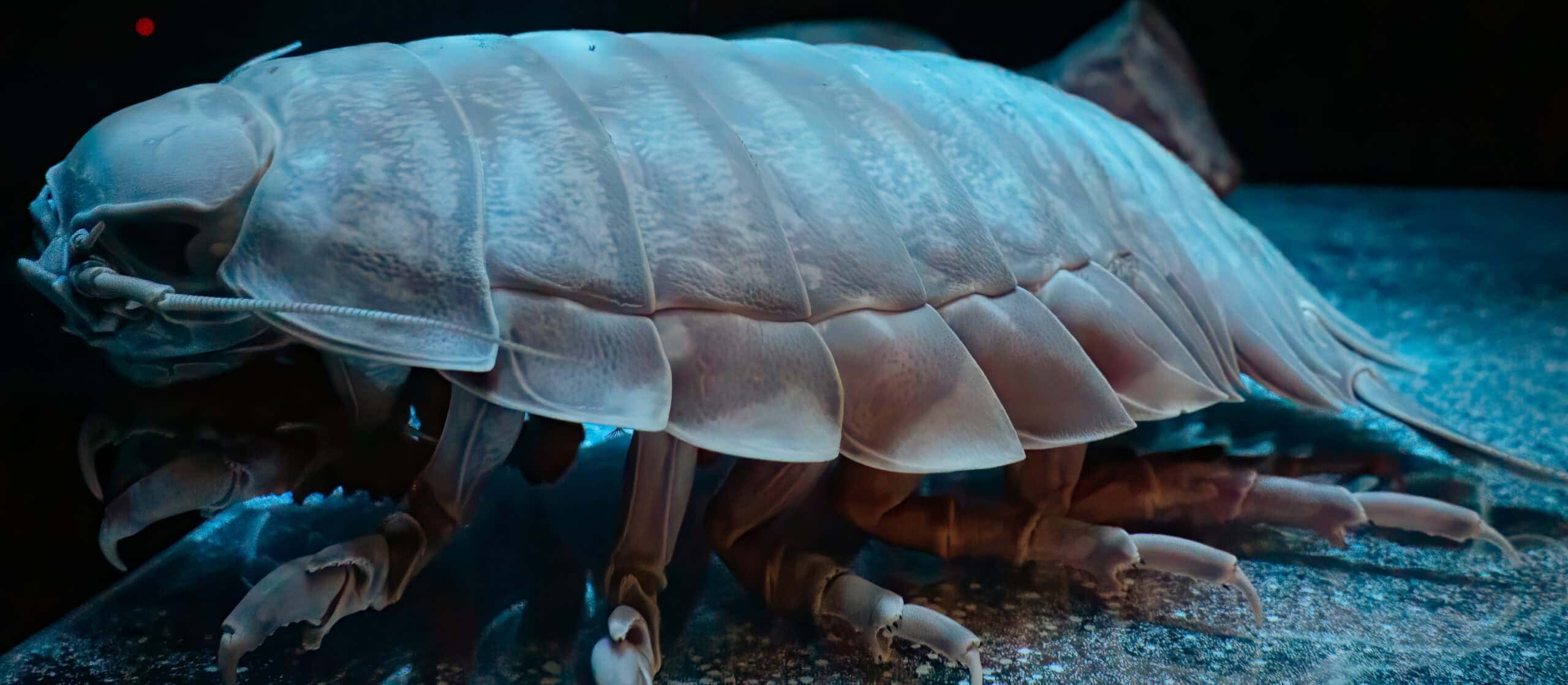
Giant isopods are enormous relatives of the woodlouse, living at depths of 500 to 7,000 feet. These crustaceans can grow up to 16 inches long, with a hard exoskeleton and large compound eyes. They are scavengers, feeding on dead animals that fall to the ocean floor, but they can also go long periods without eating. Giant isopods have been found feeding on the carcasses of whales, fish, and squid. Their slow movements and armored body help protect them from predators in the deep sea.
Fangtooth Fish
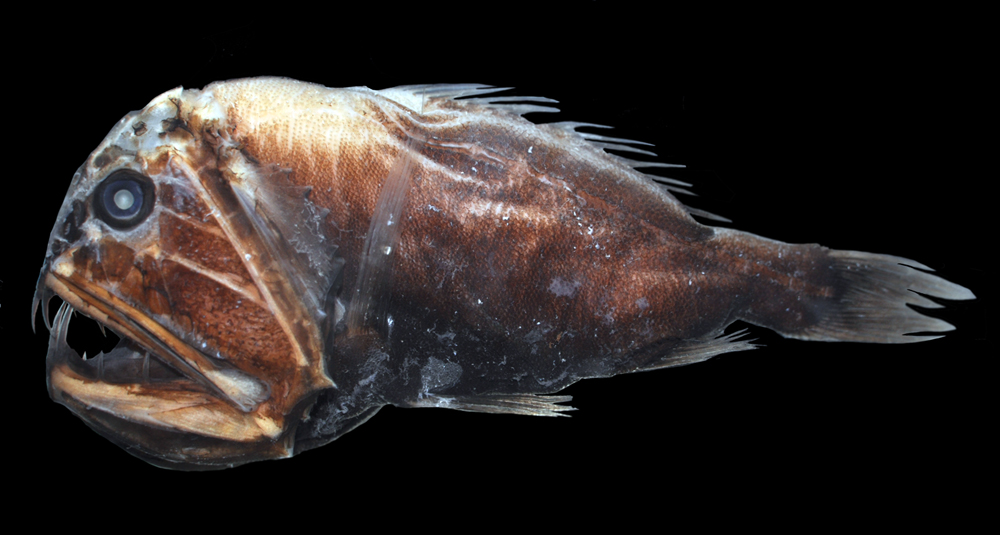
The fangtooth fish gets its name from its disproportionately large teeth, which are the largest of any fish relative to its body size. This small fish, typically only 6 inches long, lives at depths of up to 16,000 feet, making it one of the deepest-living fish species. Fangtooths have dark, spiny bodies and extremely strong jaws, which they use to catch and crush prey. They are solitary hunters, feeding on other fish and squid. Despite their fearsome appearance, fangtooth fish pose no threat to humans due to their small size.
Coffinfish
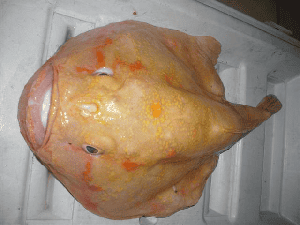
The coffinfish gets its name from its ability to puff up like a balloon, resembling a “coffin” shape when threatened. Found at depths of 2,000 to 5,000 feet, it lives in dark, cold waters. It has a smooth, pinkish-gray body and can grow up to 8 inches in length. Its most striking feature is its ability to walk along the seafloor using its modified fins. Coffinfish feed on small invertebrates and can go long periods without food due to their slow metabolism.
Yeti Crab
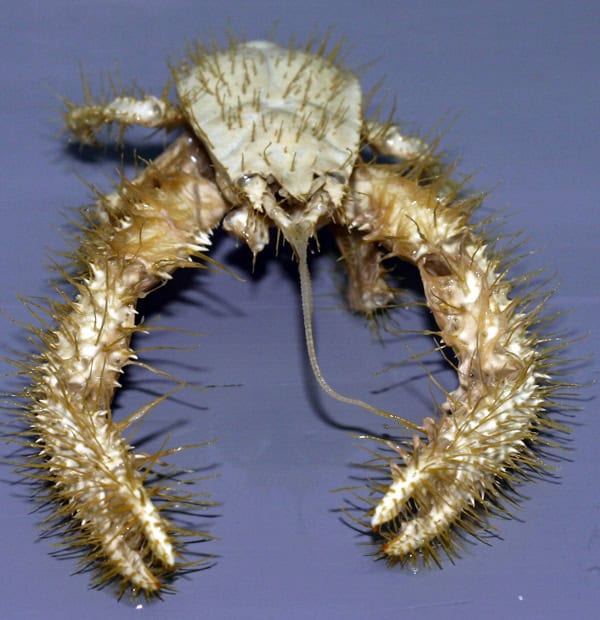
The yeti crab, also known as Kiwa hirsuta, is an unusual crustacean discovered near hydrothermal vents at 7,200 feet. It has long, hairy pincers, which give it its “yeti” nickname. These pincers are covered in bacteria that the crab farms and consumes. Yeti crabs are blind and rely on the heat from the vents for survival. They can grow up to 6 inches long and feed on small particles in the water. Their unique adaptations make them one of the strangest deep-sea dwellers.
Barreleye Fish
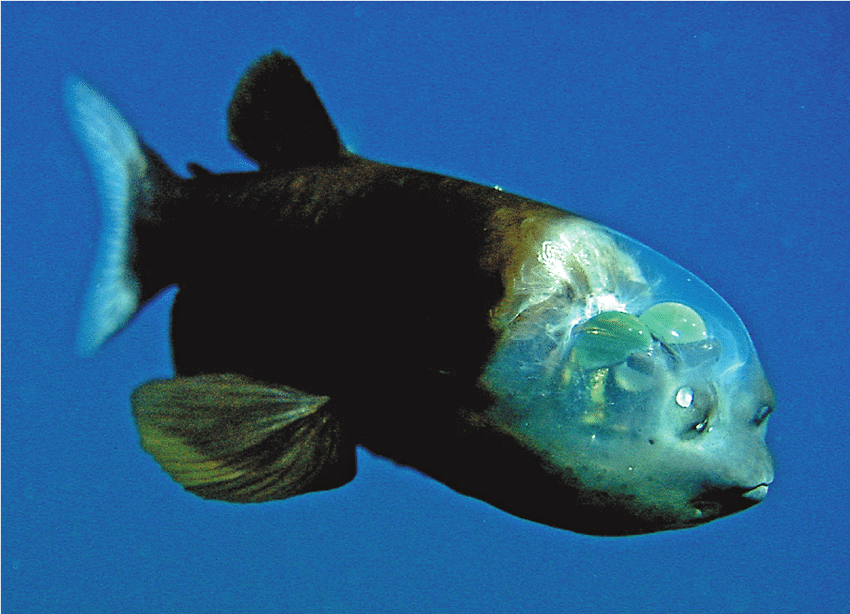
The barreleye fish is known for its transparent, dome-shaped head, which allows it to look directly upward through its eyes. It lives at depths of 2,000 to 2,600 feet, where sunlight barely penetrates. This fish has tubular eyes that are extremely sensitive to light, helping it spot prey above. Barreleye fish grow up to 6 inches long and have a small, streamlined body. They feed primarily on jellyfish and small invertebrates. Its see-through head gives it a ghostly appearance, making it one of the ocean’s most peculiar creatures.
Sea Pig
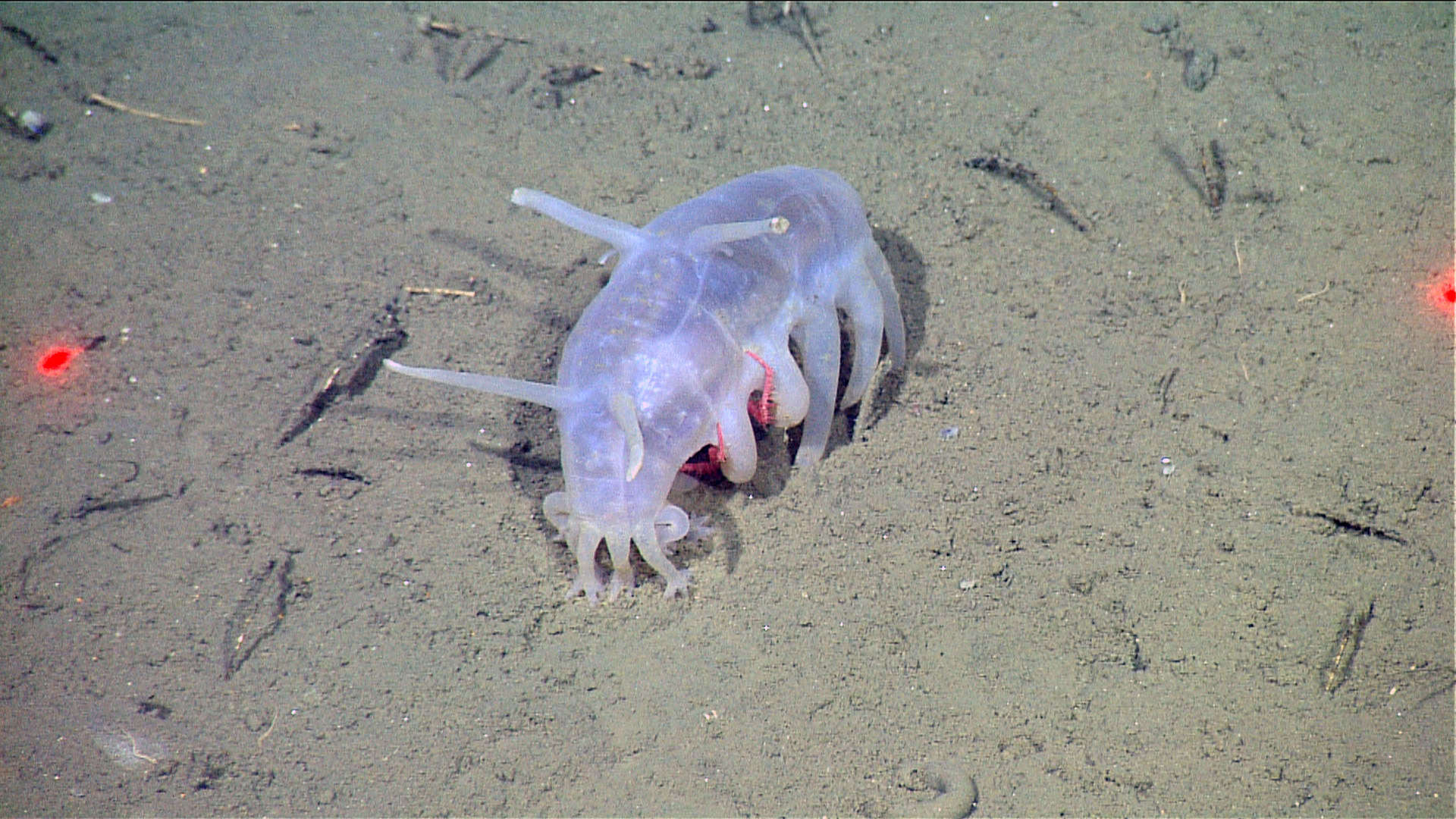
The sea pig is a type of deep-sea sea cucumber that crawls along the ocean floor at depths of 4,000 to 16,000 feet. It has a pale, soft body with short legs and antennae-like structures. Sea pigs can grow up to 4 inches long and are scavengers, feeding on organic material that falls from the surface. They play a vital role in deep-sea ecosystems by breaking down dead matter. These slow-moving creatures are often found in large groups, searching for food on the ocean floor.
Hatchetfish
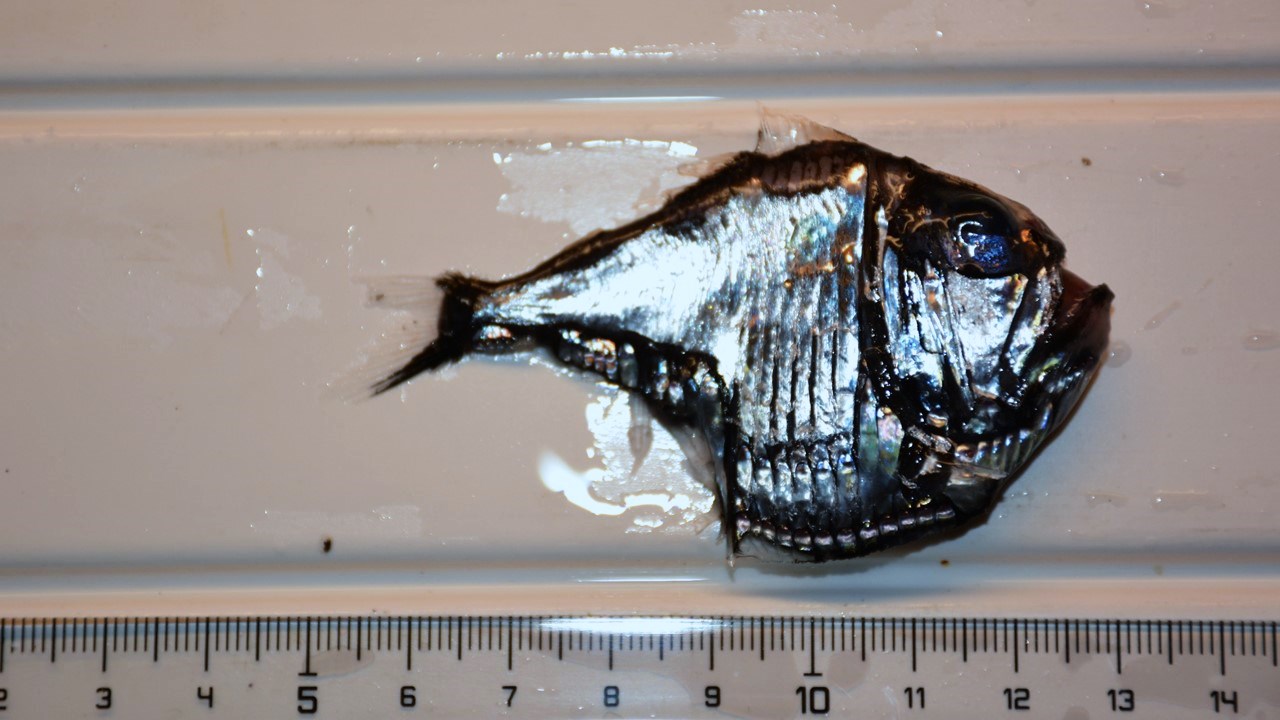
The hatchetfish is a small, deep-sea fish known for its thin, silvery body that resembles the shape of a hatchet. It lives at depths of 600 to 4,500 feet and has specialized photophores along its body that produce light. These bioluminescent lights help the hatchetfish blend into the faint light from above, making it nearly invisible to predators. Hatchetfish grow to about 6 inches in length and feed on small crustaceans. Despite their small size, they are skilled hunters in the dark ocean depths.
Black Swallower
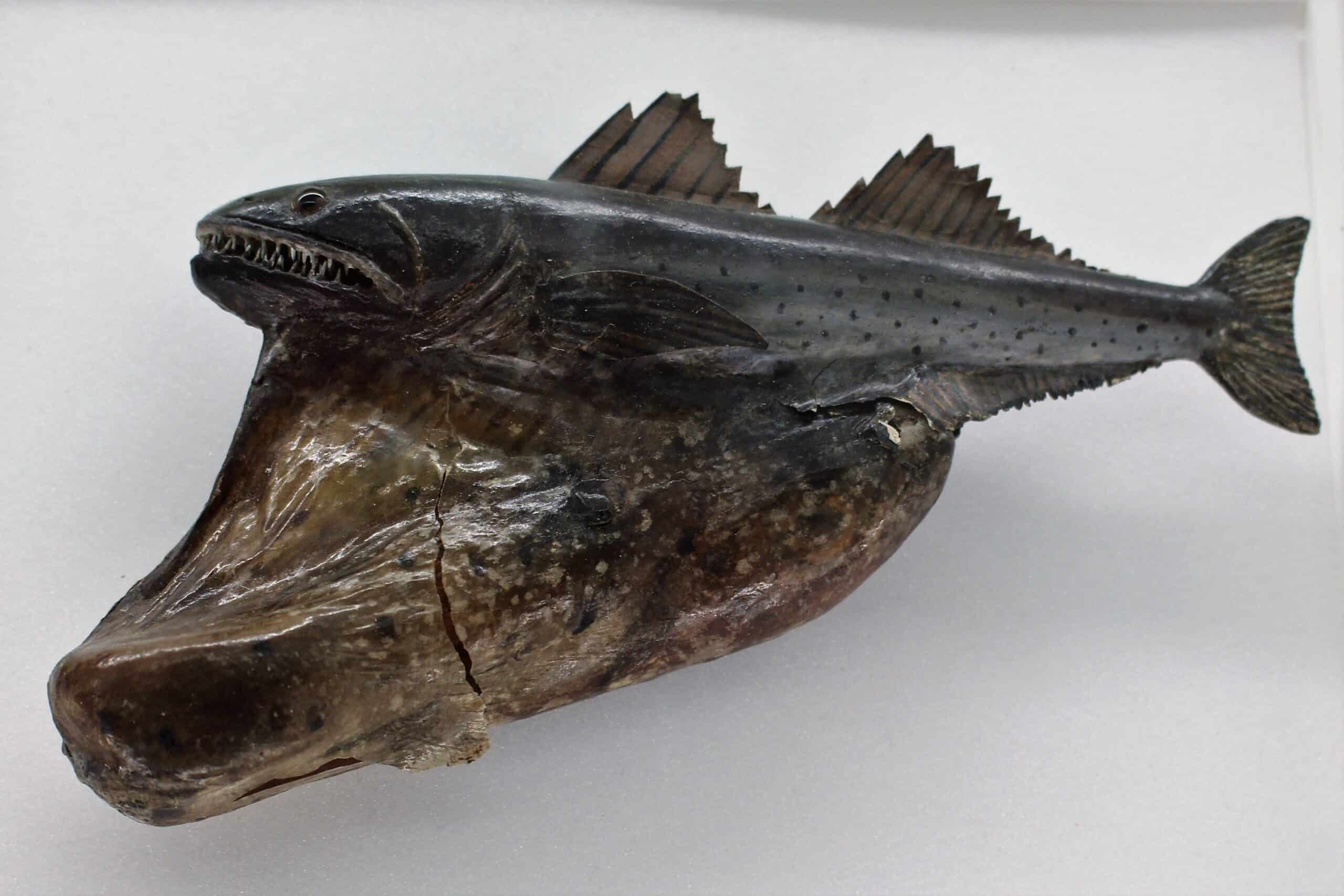
The black swallower is a deep-sea fish capable of swallowing prey up to twice its size. It lives at depths of 2,000 to 9,000 feet and has a dark, elongated body. This fish can grow up to 10 inches long but has a distensible stomach, allowing it to consume large prey. The black swallower’s sharp teeth and expandable jaws make it a formidable predator. It mainly feeds on fish, swallowing them whole before digesting them over time.
Amphipods
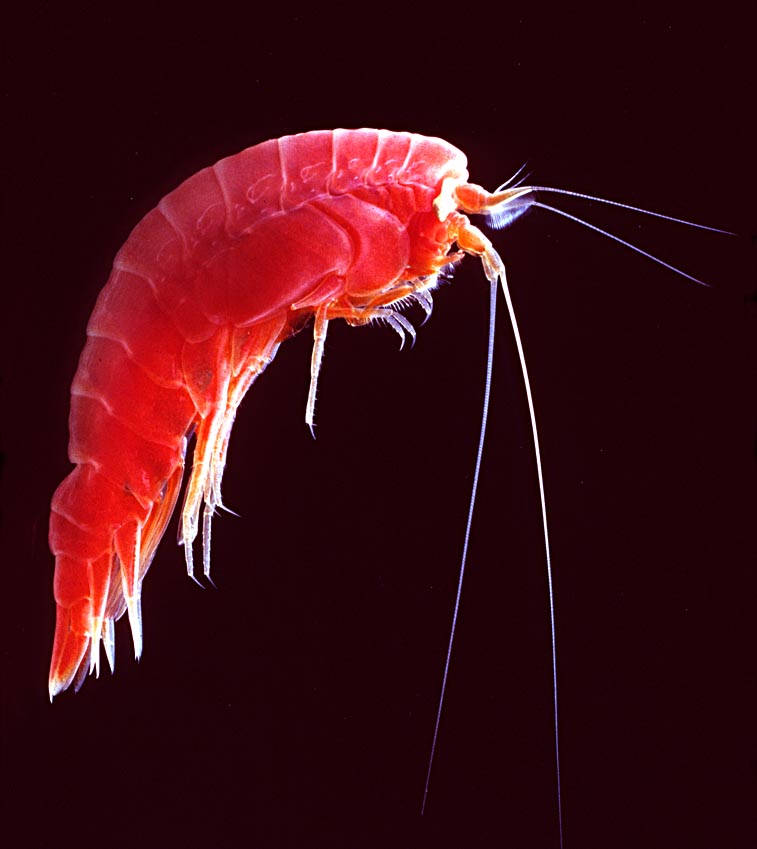
Amphipods are tiny, shrimp-like crustaceans found at depths as great as 36,000 feet. They have a hard exoskeleton and a compressed body, allowing them to survive extreme pressure. Amphipods range in size, with some species growing up to 13 inches long. They play a critical role in deep-sea ecosystems, feeding on decaying organic matter. Despite their small size, they are one of the most abundant creatures in deep ocean trenches.
Glass Squid
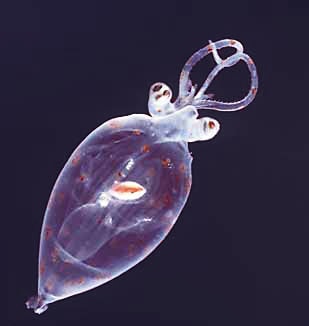
The glass squid is named for its nearly transparent body, which helps it avoid predators in the deep sea. It lives at depths of 2,000 to 3,000 feet, floating in the midwater column. This squid grows up to 12 inches long and has large eyes that help it see in the darkness. It uses bioluminescence to blend in with the faint light above. Glass squids feed on small fish and plankton, using their long tentacles to catch prey.
Deep-sea Jellyfish (Atolla Jellyfish)
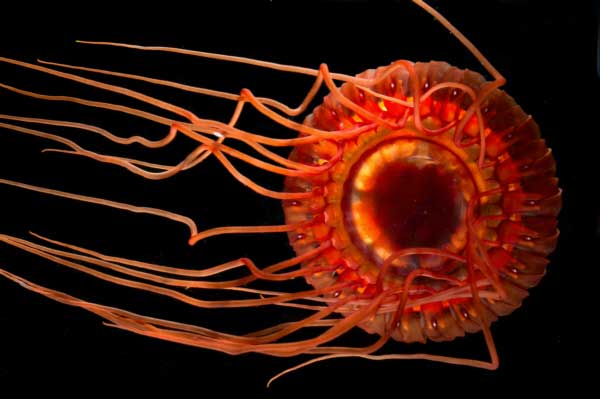
The Atolla jellyfish is a bioluminescent species that lives in the deep sea, typically at depths of 3,000 feet or more. It has a bell-shaped body with long, trailing tentacles. When threatened, it lights up in a dramatic display of blue light, often called a “burglar alarm” to attract larger predators to scare off its attackers. These jellyfish grow up to 6 inches in diameter and feed on small invertebrates. Their glowing defense mechanism is one of the most stunning displays in the ocean’s depths.
Deep-sea Sea Cucumber
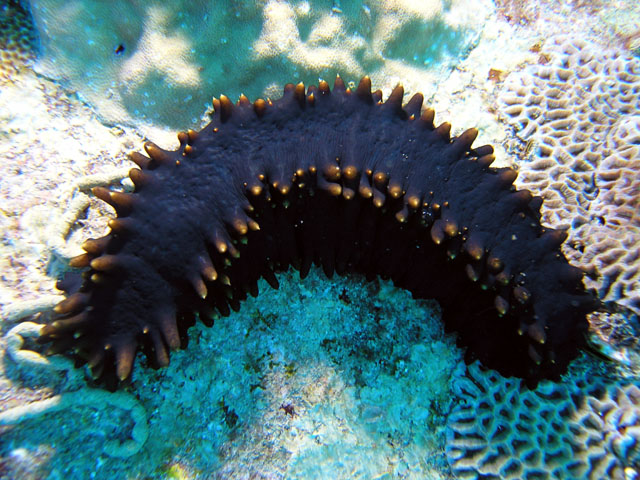
The deep-sea sea cucumber is a soft-bodied animal found crawling along the ocean floor at depths of up to 36,000 feet. It has a long, tubular body and uses tiny tube feet to move slowly across the seafloor. Sea cucumbers feed on detritus, filtering out nutrients from the sediment. They can grow up to 6 feet long, though most are smaller. These creatures play a vital role in recycling nutrients in deep-sea ecosystems.
Tripod Fish
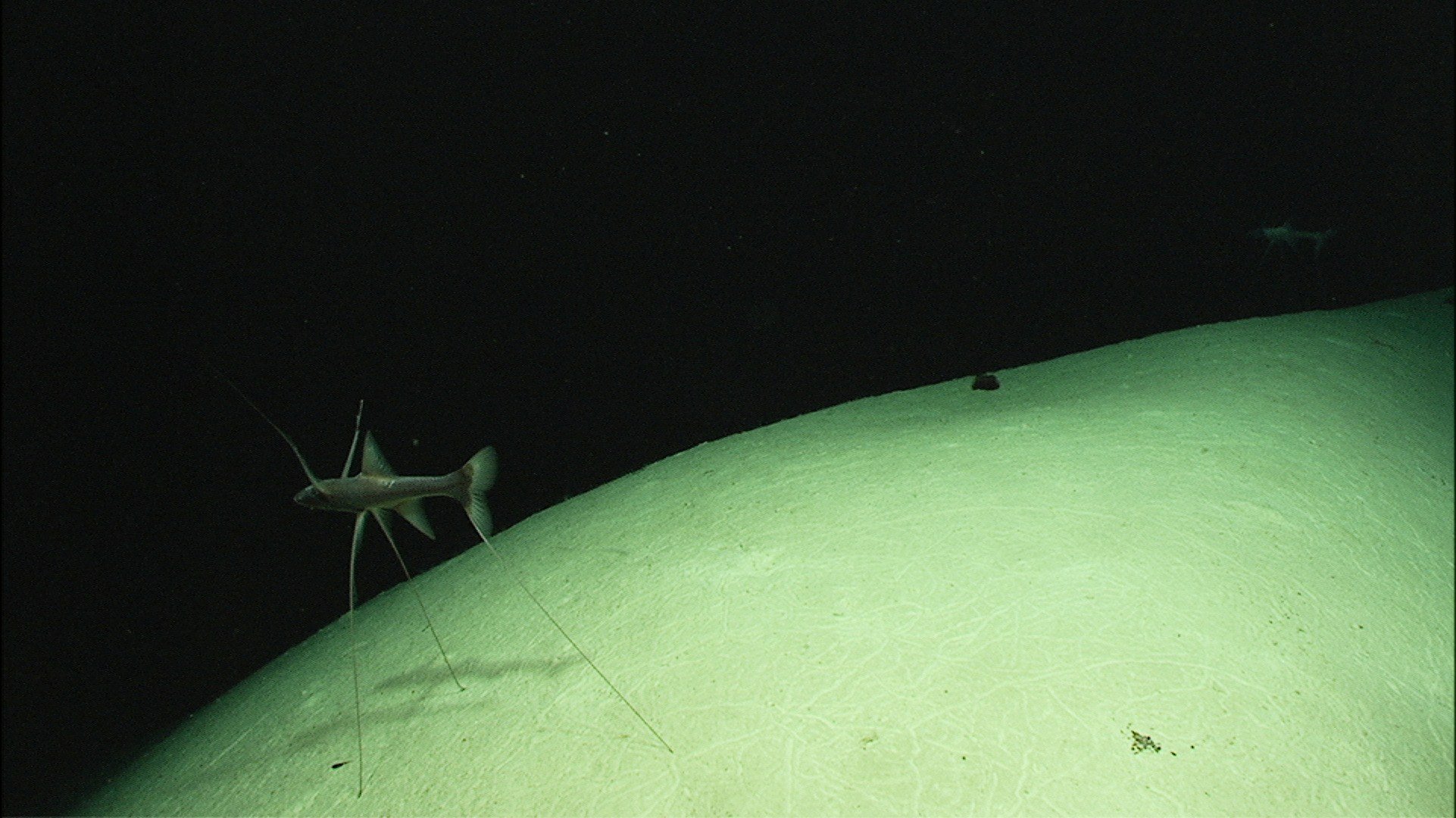
The tripod fish gets its name from its long, fin-like “legs” that allow it to stand on the ocean floor. It lives at depths of 3,000 to 16,000 feet, waiting patiently for food to drift by. This fish has a long, slender body and can grow up to 3 feet long. Its fins are highly sensitive, detecting small movements in the water. The tripod fish feeds on small shrimp and plankton, relying on its unique posture to catch passing prey.
Deep-sea Brittle Star

The deep-sea brittle star is a starfish-like creature found crawling along the ocean floor at depths of 10,000 to 16,000 feet. It has a central body and long, flexible arms, which it uses to move across the seafloor. Brittle stars feed on detritus and small particles, playing an essential role in deep-sea ecosystems. They can grow up to 10 inches in diameter and often hide in crevices to avoid predators. Their ability to regenerate lost arms makes them resilient survivors in the deep sea.
This article originally appeared on Rarest.org.
More from Rarest.org
1995 Lincoln Penny Value Guide

The 1995 Lincoln penny is made of 97.5% zinc and 2.5% copper. It has a face value of one cent, a mass of 2.5 grams, a diameter of 19.05 millimeters, a thickness of 1.52 millimeters, and a plain edge. Read More.
1979 Dime Value Guide
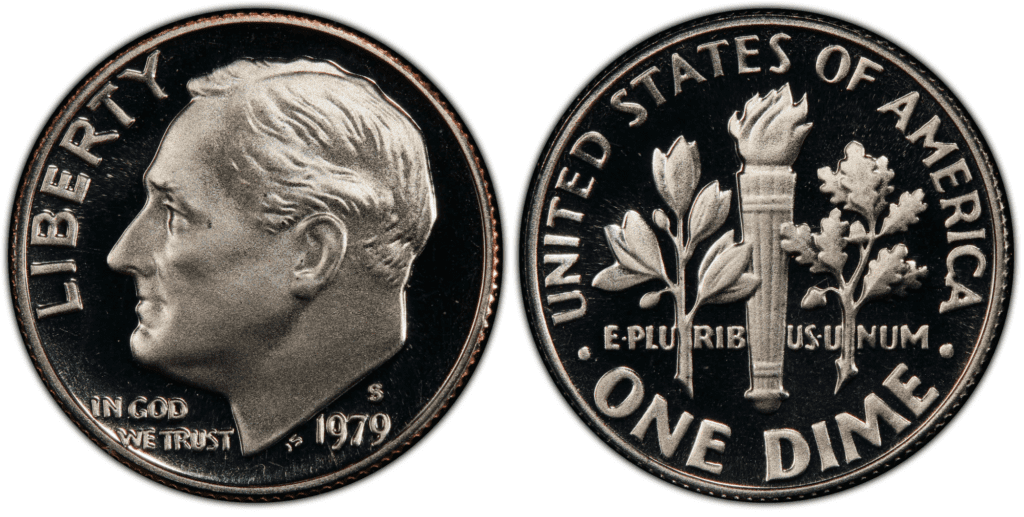
The 1979 Roosevelt dime is made of 91.67% copper and 8.33% nickel. It has a face value of $0.10, a mass of 2.268 grams, a diameter of 17.91 mm, and a thickness of 1.35 mm. Read More.
17 Fascinating Creatures Living in the World’s Highest Peaks

High-altitude environments are some of the most challenging places on Earth, where thin air, freezing temperatures, and rugged terrain create a harsh backdrop for life. Read More.
